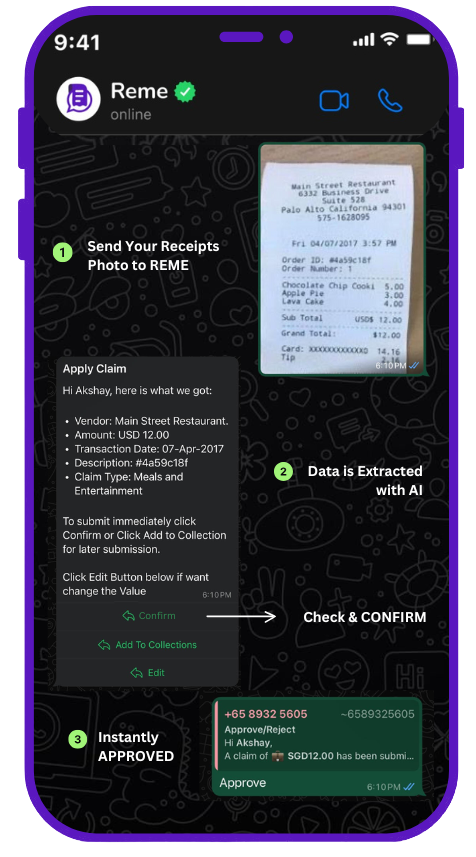In today’s data-driven business landscape, every corporate function is expected to deliver strategic value beyond its operational responsibilities. Finance departments, once viewed primarily as guardians of the purse strings, are increasingly becoming strategic partners to the business—and nowhere is this transformation more evident than in the realm of expense management.
Modern AI-powered expense management systems have evolved far beyond their original purpose of processing reimbursements. They now serve as powerful analytics engines, transforming seemingly mundane spending data into strategic insights that can drive business decisions, optimize operations, and create competitive advantages.
Beyond Basic Reporting: The Analytics Evolution
Traditional expense reporting provided backward-looking summaries: how much was spent, by whom, and in which broad categories. While useful for basic accounting purposes, these reports offered limited strategic value. Today’s expense analytics represents a quantum leap in capabilities:
From Descriptive to Predictive and Prescriptive
Modern expense analytics has evolved through three distinct phases:
- Descriptive Analytics: Basic reporting of what happened (total spend by category, department, etc.)
- Predictive Analytics: Forecasting future spending patterns based on historical data and current trends
- Prescriptive Analytics: Recommending specific actions to optimize spending and achieve business objectives
The most advanced systems now combine all three approaches, not just telling you what happened and what might happen next, but actively suggesting how to improve outcomes through specific spending strategies.
From Isolated Data to Integrated Business Intelligence
Expense data no longer exists in a silo. AI-powered systems integrate spending information with:
- Sales performance metrics
- Customer relationship data
- Project outcomes and milestones
- Employee productivity measures
- Market and economic indicators
This integration enables organizations to draw connections between spending patterns and business results, answering questions like: “Do increased client entertainment expenses correlate with higher close rates?” or “What is the ROI of sending team members to industry conferences?”
Strategic Insights from Expense Analytics
The true power of expense analytics lies in the specific strategic insights it can deliver across multiple business dimensions:
Customer and Market Intelligence
Your expense data contains hidden intelligence about customers and markets:
- Increasing entertainment expenses with specific accounts may signal relationship-building opportunities
- Travel patterns can reveal emerging market interests before they appear in formal business plans
- Changes in client-related expenses may indicate shifts in competitive dynamics
- Expense timing relative to deal progression can reveal optimal engagement strategies
For example, one multinational corporation discovered through expense analytics that deals where in-person meetings occurred during the proposal stage had a 40% higher close rate than those conducted entirely remotely—a finding that directly influenced their sales strategy.
Operational Efficiency Insights
Expense data provides unique visibility into operational inefficiencies:
- Identifying unnecessarily duplicative travel when multiple team members visit the same client separately
- Revealing departments that consistently book last-minute travel at premium rates
- Highlighting projects with disproportionate expense-to-revenue ratios
- Detecting seasonal patterns that could enable better resource planning
One professional services firm used expense analytics to discover that their practice of sending project teams to client sites every Monday morning was costing them over $1 million annually in premium airfares—a situation they remedied by implementing a “travel Sunday/Thursday” policy for regular engagements.
Employee Experience and Productivity
Expense patterns contain surprising insights about employee experience and productivity:
- Correlations between travel intensity and employee retention rates
- The productivity impact of different travel policies (premium vs. economy, direct vs. connecting flights)
- Relationships between team-building expenditures and subsequent performance
- Patterns that suggest employee satisfaction or dissatisfaction
A technology company found that teams whose managers regularly approved modest team meals had measurably higher productivity and lower turnover than teams that never dined together—a simple insight that led to revised guidelines encouraging periodic team meals.
Vendor Management Intelligence
Expense data reveals opportunities to optimize vendor relationships:
- Identifying fragmented spending across vendors that could be consolidated for better terms
- Discovering departments bypassing preferred vendors without legitimate business reasons
- Recognizing opportunities to negotiate improved rates based on actual usage patterns
- Detecting vendor price increases that might otherwise go unnoticed
One manufacturing company identified over $300,000 in annual savings simply by recognizing through expense analytics that employees across different locations were using dozens of different car rental companies rather than the two vendors with whom the company had negotiated corporate rates.
AI-Powered Analytical Capabilities
What makes today’s expense analytics so powerful is the sophisticated AI technology behind it:
Machine Learning Pattern Recognition
Modern systems employ machine learning algorithms that identify subtle patterns human analysts would likely miss:
- Correlations between certain expense types and successful business outcomes
- Early indicators of potential compliance issues before they become problems
- Spending anomalies that signal changing business conditions
- Micro-trends that reveal emerging opportunities or challenges
These algorithms become more accurate over time as they ingest more data, continuously refining their ability to distinguish meaningful patterns from random variations.
Natural Language Processing for Contextual Understanding
Advanced systems use NLP to extract meaningful context from expense descriptions, comments, and associated communications:
- Identifying the true business purpose behind expenses beyond basic categorization
- Understanding sentiment and context in expense justifications
- Extracting client names, project references, and business objectives from natural language entries
- Connecting expenses to specific business initiatives even when not explicitly coded
This contextual understanding transforms raw expense data into rich, meaningful information about business activities and relationships.
Automated Insight Generation and Distribution
The most sophisticated platforms automatically generate insights and distribute them to relevant stakeholders:
- Sales leaders receive analysis of how entertainment spending correlates with deal progression
- Department heads get alerts about spending efficiency opportunities specific to their teams
- Executives receive strategic insights about spending patterns relative to business outcomes
- Finance teams get predictive alerts about potential budget variances before they occur
This targeted distribution ensures that insights reach the people who can act on them, rather than remaining buried in reports that few will read.
Implementing Strategic Expense Analytics
Organizations seeking to transform their expense data into strategic insights should follow these best practices:
1. Establish Clear Business Questions
Begin with specific business questions you want expense data to help answer:
- Which clients justify higher relationship investment?
- How does travel spending impact sales outcomes?
- Which departments are most efficient with their T&E resources?
- Are we optimizing our vendor relationships?
These questions provide focus for your analytics efforts and ensure you’re generating actionable insights rather than interesting but ultimately unused data points.
2. Integrate Multiple Data Sources
Connect expense data with other business systems:
- CRM systems for customer relationship context
- HRIS platforms for employee information
- Project management systems for initiative tracking
- Financial systems for broader economic context
This integration provides the 360-degree view needed for truly strategic insights.
3. Invest in Visualization and Accessibility
Ensure insights are accessible to business users, not just finance specialists:
- Intuitive dashboards tailored to different stakeholder needs
- Self-service analytics capabilities for department leaders
- Mobile access to key metrics and insights
- Alert systems that proactively notify users of significant findings
The most valuable insights are those that actually reach and influence decision-makers.
4. Create Feedback Loops
Establish mechanisms to track actions taken based on expense insights and their outcomes:
- Document strategic decisions influenced by expense analytics
- Measure the impact of changes made in response to insights
- Use outcomes to refine analytical models and approaches
- Celebrate wins to reinforce the value of data-driven decision making
These feedback loops help refine your analytics approach and demonstrate ROI.
Conclusion
The transformation of expense management from administrative process to strategic intelligence function represents one of the most significant yet underappreciated opportunities in modern business. Organizations that harness the power of AI-driven expense analytics gain visibility not just into where money is being spent, but into how that spending advances or hinders key business objectives.
As companies continue to seek competitive advantage in an increasingly complex business environment, the strategic insights hidden within their expense data represent a largely untapped resource. Those who successfully mine this resource will discover new opportunities for efficiency, effectiveness, and growth—turning what was once considered a necessary cost center into a genuine source of strategic value.



